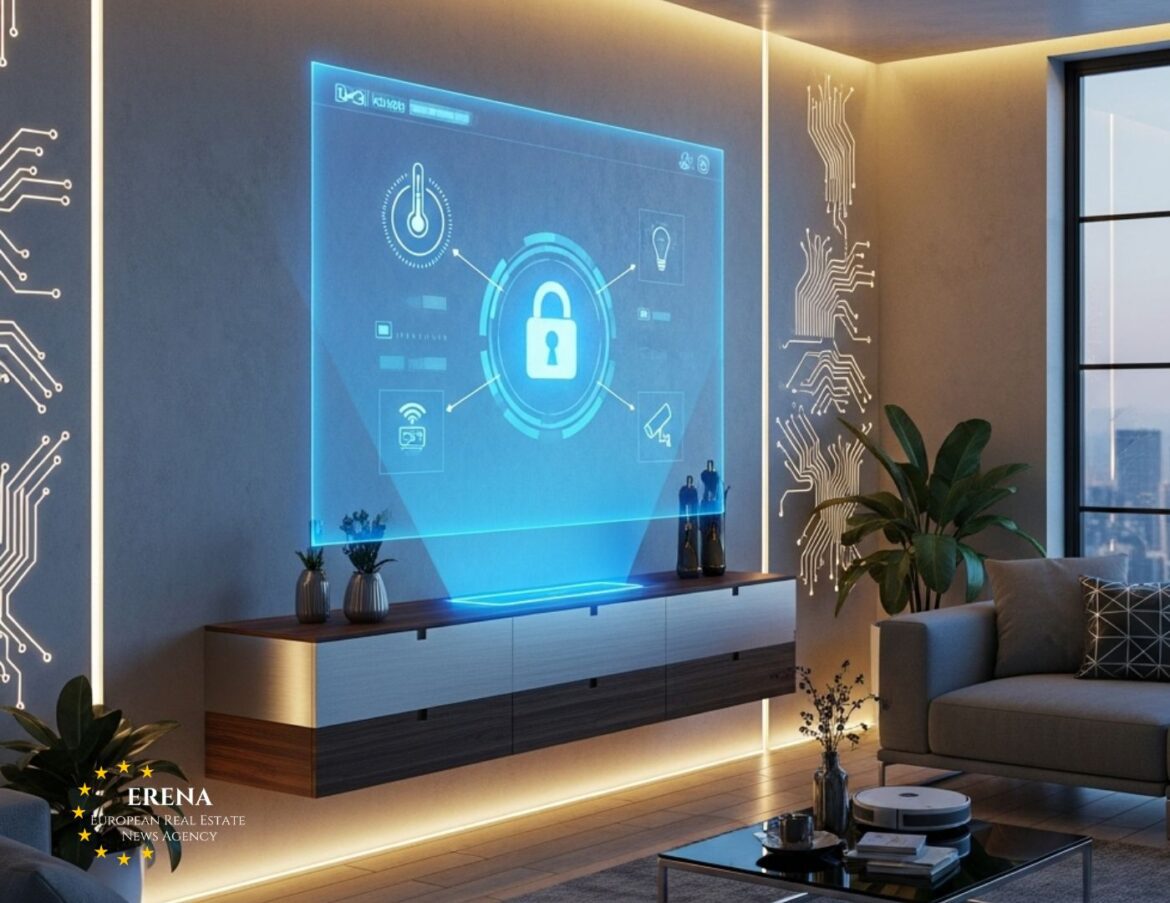Smart homes are no longer a futuristic concept. From voice assistants and automated lighting to remote-controlled heating and surveillance cameras, Internet of Things (IoT) devices are becoming integral to modern residential life. According to Statista, by 2025, over 200 million connected home devices are expected to be in use across Europe. But with the rise of convenience comes a new threat: cybersecurity risks.
How Smart Homes Become Vulnerable
A smart home is essentially a network of internet-connected devices — sensors, cameras, locks, thermostats, and even kitchen appliances. Each of these devices represents a potential entry point for cybercriminals.
Unlike computers or smartphones, many IoT devices lack robust security features, do not receive regular updates, and often use weak or factory-default passwords.
For instance, low-cost smart cameras sold in the EU for €25–€80 often come with pre-set admin passwords and outdated firmware, making them easy targets. Once breached, attackers can gain access to live video feeds, take control of devices, or infiltrate the homeowner’s entire network.
Real Threats for Users
According to the European Union Agency for Cybersecurity (ENISA), household IoT-related incidents in Europe rose by 37% in 2024. Common threats include:
- Wi-Fi breaches — attackers exploit poorly secured routers to access all devices on the home network
- Camera hijacking — surveillance devices are used for spying on residents
- Command spoofing — smart locks can be remotely opened by hackers
- DDoS attacks using smart home devices — infected devices become part of a botnet without the owner’s knowledge
In the UK in 2023, a coordinated attack targeted the Hive smart heating system, compromising temperature control in over 3,000 homes.
Cybersecurity Regulations in Europe
The European Union is actively introducing legislation to protect consumers. In 2024, the Cyber Resilience Act came into force, requiring manufacturers of connected devices to ensure long-term security support and software updates throughout a product’s lifecycle.
Starting in 2025, France mandates that all connected devices — including thermostats, cameras, and smart locks — must carry a CE+Secure label, a new certification guaranteeing built-in encryption and update capabilities.
Germany and the Netherlands are going further, discussing the introduction of a public registry for secure devices and mandatory cybersecurity audits for manufacturers seeking to enter the EU market.
Financial Damage and Insurance
According to Deloitte, damage from a smart home cyberattack can range between €5,000 and €10,000, depending on the extent of the breach. This can include:
- Theft due to remotely opened doors
- Data breaches (e.g., banking or personal information)
- Replacement of compromised hardware
- Privacy violations (e.g., leaked video or audio recordings)
In response, several European insurers now offer cyber protection add-ons for home insurance. For example, Allianz France offers “Cyberdomicile” coverage for €6/month, covering up to €15,000 in cyber-related damages.
How Much Does Security Cost?
The good news is that most risks can be mitigated through basic cybersecurity measures. Here’s a typical starter kit for IoT security in European homes:
- Encrypted Wi-Fi router with WPA3 support — from €80
- Changing factory default passwords — free but critical
- Network segmentation (guest network for IoT devices) — available in most modern routers
- VPN integration at router level — €100+ for hardware, plus €3–5/month for a VPN subscription
- Smart camera with two-factor authentication — from €60
- Automatic firmware updates (OTA support) — always choose devices with this feature
A basic cybersecurity setup for a smart home in Europe will cost around €300–400 upfront, with annual maintenance expenses of about €50.
Developers and Architects Embrace Built-In Security
As smart home integration becomes standard, developers and architects are increasingly embedding cybersecurity features into the design phase of residential projects.
In the Netherlands, some new housing developments are delivered with pre-configured security gateways, segregated networks, and encrypted device ecosystems.
In cities like Paris and Vienna, architectural firms are collaborating with cybersecurity experts to implement risk mitigation strategies before residents even move in — a competitive edge in the housing market.
Notable Incidents Across Europe
- Spain, 2023 — smart speakers were exploited to access microphones in over 500 apartments, compromising private conversations
- Belgium, 2024 — mass thermostat attacks raised indoor temperatures in 1,200 homes to 35°C, causing widespread panic and emergency service calls
- Germany, 2022 — hackers used a smart lock vulnerability to burglarize a Hamburg villa, stealing over €12,000 in valuables
The Future of Smart Home Cybersecurity
By 2030, it’s expected that over 70% of new homes in Europe will include at least five connected devices. To address this shift, the EU is developing the “Privacy by Design” approach, requiring cybersecurity to be embedded into smart home architecture from the outset.
Manufacturers will be obliged to provide security updates for at least five years, and non-compliant products will be banned from sale within the EU.
Additionally, the EU is preparing to launch a “Cyber-Safe EU” label — a consumer-friendly certification indicating a device has passed essential security standards, similar to energy efficiency labels.
Conclusion
Smart homes offer comfort, efficiency, and modern convenience. But they also open new digital vulnerabilities. When even a smart toaster can be a gateway for hackers, cybersecurity must become as essential as smoke detectors.
Europe is taking steps to ensure safe digital living, with robust legislation and security frameworks. Yet responsibility also lies with users, developers, and manufacturers.
Protecting a smart home starts not with technology, but with awareness — and with making cybersecurity a fundamental part of everyday living.

